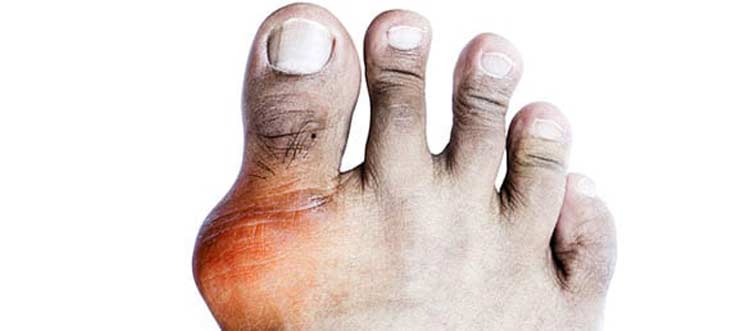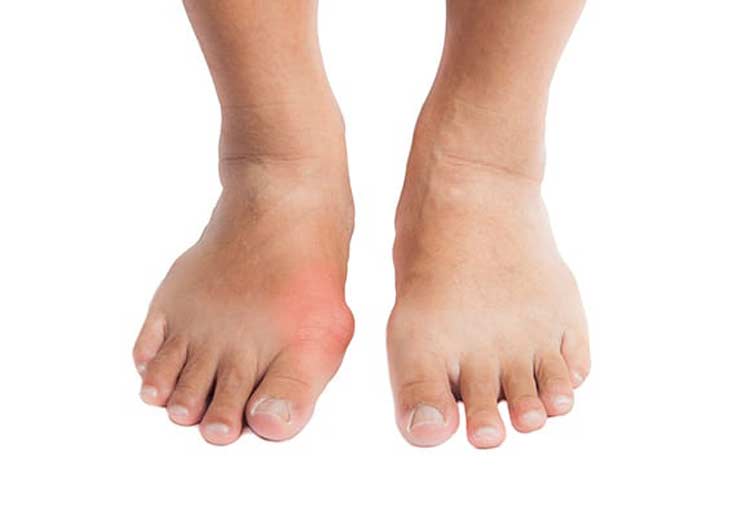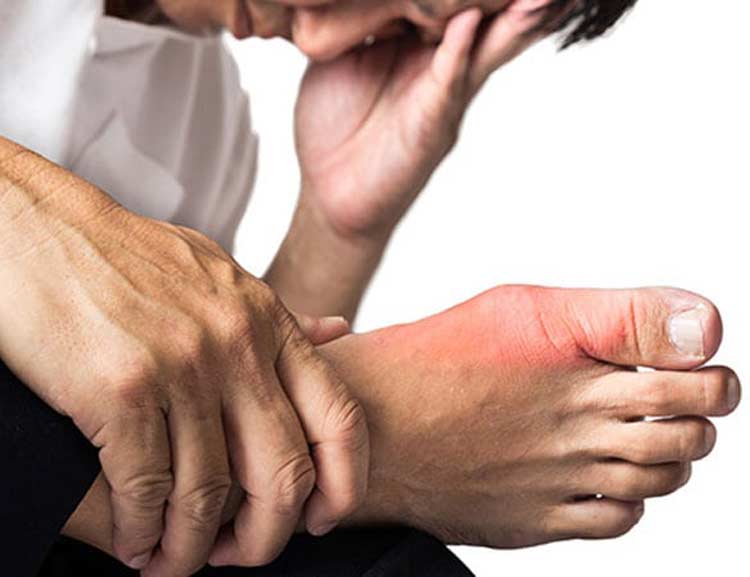
Discover how we can help you find relief from painful gout attacks.
Nearly 10 million Americans suffer from gout, a complex form of arthritis caused by an excessive amount of uric acid that often affects men between the ages of 30 and 50. Women may also be at risk of developing the condition after menopause.
- The resulting “attacks” from gout sometimes cause sharp discomfort around the big toe or other parts of the foot
- Gout attacks can be powerful enough to wake you from a sound sleep.
What Causes Gout?
Gout is characterized by a sudden bout of pain referred to as an attack. It’s caused by an accumulation of uric acid in the blood. This buildup of uric acid sometimes crystallizes, which is what causes the resulting pain around joints. Anyone can develop gout, although it’s more common in men with a body mass index (BMI) of 35 or above. Health conditions related to obesity such as high blood pressure and diabetes may also contribute to the condition or make symptoms more noticeable. Levels of uric acid are sometimes elevated by underlying medical issues, including kidney disease, high cholesterol, and some forms of cancer. There are two basic forms of gout:
- Acute: This a localized form of gout that’s usually limited to a single joint. For many patients, the big toe is often affected by acute gout.
- Chronic: This form of gout is recurring and affects several joints.


Common Symptoms of Gout
When an attack occurs, it’s often described as a sensation of a joint being on fire. The resulting discomfort may be so severe that even the slightest amount of weight placed on the affected joint can be intolerable. Pain associated with gout often comes on suddenly and usually at night. More than half of all individuals who have gout will have attacks around the big toe joint (metatarsophalangeal). If the condition gets worse, it may affect ankles and other parts of the foot along with other joints. Flare-ups may last for a week or so. However, it’s usually the first 24-36 hours of an attack that are the most painful period for sufferers. Patients with gout typically experience:
- Sudden and severe joint pain
- Visibly swollen joints
- Reduced range of motion of the affected joint
How Is It Diagnosed?
Determining if a patient has gout usually requires a blood test since there are other forms or arthritis with similar symptoms. Pseudogout is very similar to gout, except that calcium accumulates in the bloodstream instead of uric acid. Additional testing to make a positive diagnosis typically includes a joint fluid analysis, which involves examining fluid taken from the affected joint, X-rays, and a musculoskeletal ultrasound to detect urate crystals. Some doctors perform a dual energy CT scan to look for urate crystals.
How Is Gout Treated?
Heat and ice may be effective for other types of arthritis pain, but these treatments aren’t recommended for gout. Heat may contribute to inflammation and ice may cause uric acid to crystallize faster. Patients with recurring attacks of gout often need medication to prevent damage to cartilage, bones, and kidneys. Common medications used to manage the condition include:
- NSAIDs (non-steroidal anti-inflammatory drugs)
- Colchicine to manage gout-related pain
- Corticosteroids administered orally or as an injection
- Xanthine oxidase inhibitors to block uric acid production
- Probenecid and similar medications to help the kidneys remove uric acid more efficiently
How Do You Stop a Gout Attack?
Understandably, anybody suddenly awakened by a gout attack just wants immediate relief. Start by taking any medications you normally keep on hand, including over-the-counter or prescription anti-inflammatory medications such as ibuprofen or naproxen. Elevating the affected foot during an attack sometimes help. If you do have to walk around until an attack passes, a cane can ease some of the pressure on your feet. Talking to a friend or playing a game may take your mind off the pain until the attack passes. If it’s a severe attack or the pain is unbearable, seek medical attention.
Swollen and tender joints are commonly reported by gout suffers. Regular irritation around joints can affect every part of the body, including feet. This is why regular foot care should be part of your overall treatment plan if you have this form of arthritis. Untreated injuries to feet may make symptoms associated with gout worse. Maintaining a healthy weight, paying attention to your diet, avoiding sugary and alcoholic beverages, and drinking plenty of water may reduce your risk of experiencing an attack or developing other conditions that may affect feet, ankles, and overall health.

